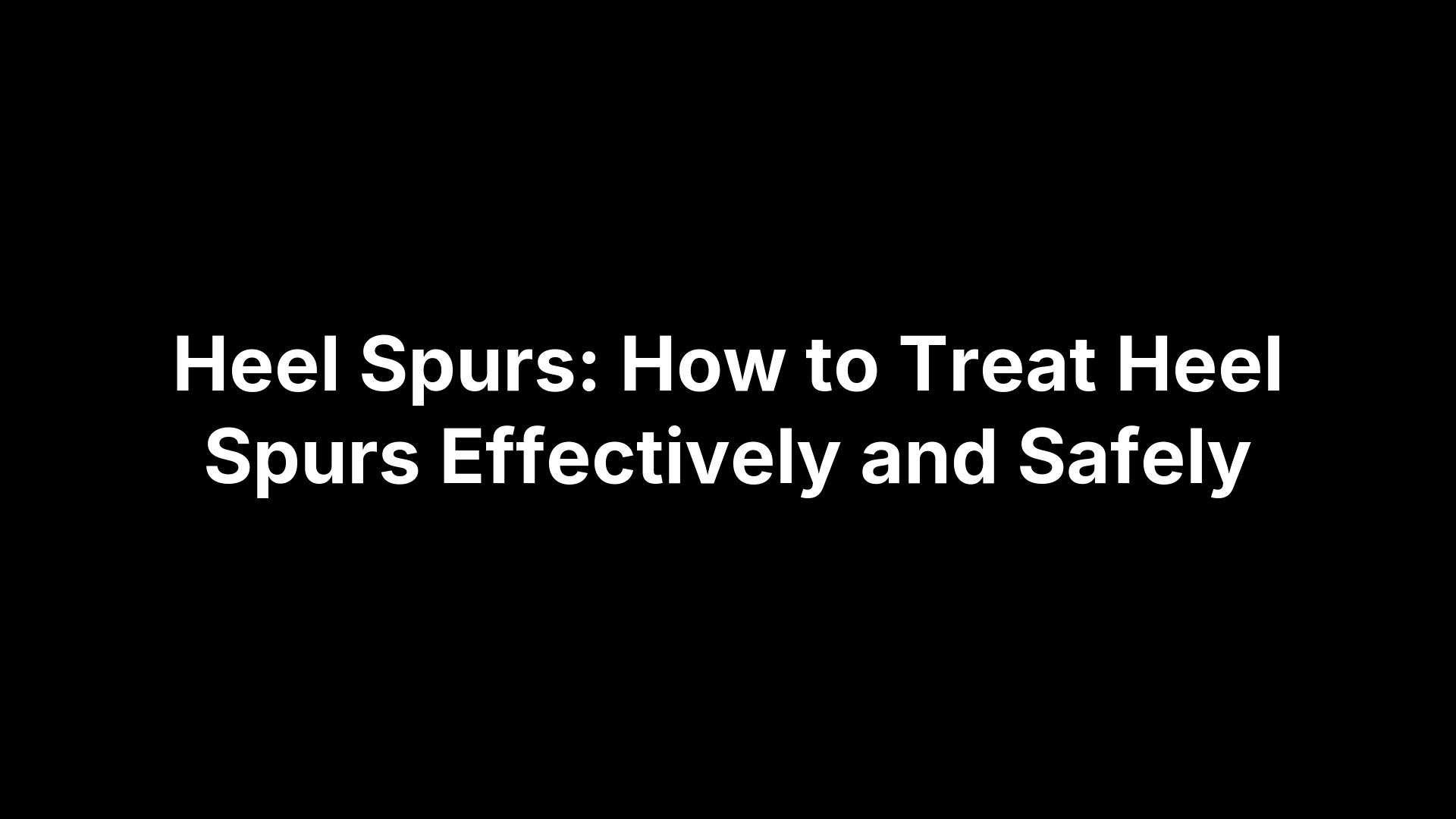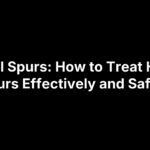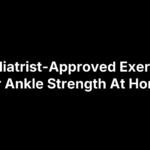Big-toe pain—whether it flashes inside the nail bed, throbs at the metatarsophalangeal (MTP) joint, or burns along the ball of the foot—simply means something is hurting the hallux or the tissues that move, cushion, or protect it. In more than 90 % of clinic visits that “something” turns out to be one of twelve repeat offenders: ingrown toenail, bunion, osteoarthritis / hallux rigidus, gout flare, turf toe, fracture, sesamoiditis, nerve compression, diabetic neuropathy or ulceration, toenail infection, bursitis, or inflammatory arthritis (psoriatic or rheumatoid). This article sorts each culprit from the next and shows you exactly how to tell which one fits your symptoms.
Knowing the real cause matters because the fixes are wildly different—gout medicine won’t touch a bunion, and a roomy shoe won’t dissolve uric-acid crystals. Stick with us and you’ll get a side-by-side look at the 12 conditions, easy at-home relief ideas, red-flag signs that call for a doctor’s visit, and a quick checklist to keep future flare-ups at bay. Let’s get your big toe back to quiet duty so the rest of you can keep moving.
1. Ingrown Toenail
When the corner of a toenail digs into surrounding skin instead of gliding past, irritation follows. That misdirection is a leading reason people seek help for big-toe pain.
What it is and why it hurts
Basically, the nail edge turns into a tiny blade, slicing the nail fold with every step and inviting germs.
Recognizable symptoms
Red, puffy skin hugs the nail edge, throbs with pressure, and may ooze yellow drainage. Unlike paronychia, swelling stays local.
At-home care that’s safe
Soak the toe in warm Epsom-salt water 15 minutes twice a day, slip a wisp of cotton beneath the corner, wear wide shoes.
Medical treatments
Clinicians numb the toe, excise the edge, cauterize the root if needed, and add antibiotics or matrixectomy for recurrences.
2. Bunion (Hallux Valgus)
A bunion is the classic side-bump at the base of the big toe. As the hallux angles toward the second toe, the first metatarsal bone swings the opposite way, leaving a knob that rubs on shoes and inflames surrounding tissue—no wonder it’s such a common cause of big-toe pain.
Structural changes behind the bump
The MTP joint gradually misaligns: the big toe drifts laterally, the metatarsal head migrates medially, and a fluid-filled bursa often forms over the new “knuckle,” adding tenderness.
Symptoms checklist
- Visible bump that reddens after a long day
- Aching or burning pain inside tight shoes
- Callus under the first metatarsal head
- Limited toe motion or a subtle “click” when you bend it
Contributing factors
Genetics tops the list, but flat feet, narrow or high-heeled shoes, ligament laxity, and systemic arthritis (especially rheumatoid) all accelerate the deformity.
Relief & correction options
- Wide, deep toe-box shoes and bunion pads to limit friction
- Toe spacers or night splints to slow progression
- Custom orthotics to stabilize pronation
- Outpatient surgery (osteotomy, Lapiplasty® fusion) if pain persists despite three to six months of conservative care
3. Osteoarthritis and Hallux Rigidus
Progressive stiffness in the big-toe joint—a sneaky cause of big toe pain—often signals osteoarthritis, called hallux rigidus once motion becomes limited. Micro-trauma strips cartilage so bone grinds on bone, causing sharp or aching pain.
Degeneration explained
As cartilage thins, the body builds osteophytes along the top of the metatarsophalangeal joint. These spurs block dorsiflexion and ramp up pressure with each step.
Classic signs
Pain on toe-off, a crunchy or grinding sensation, and a bony bump on the joint’s roof; swelling usually builds slowly and there’s no fever, unlike a gout flare.
Risk factors
Past turf-toe injuries, repetitive running, hard-soled work boots, and family history all raise the odds.
Treatment ladder
Most patients improve with rocker-bottom shoes, carbon-graphite inserts, and short courses of NSAIDs. Persistent cases may need corticosteroid injection; end-stage joints can be trimmed (cheilectomy), fused, or replaced.
4. Gout Flare (Podagra)
A gout flare—“podagra” when it strikes the big toe—feels like someone flipped a pain switch overnight. The joint goes from quiet to volcanic in just a few hours.
Uric-acid crystal build-up 101
When blood uric-acid levels rise past their solubility point, needle-shaped monosodium urate crystals precipitate inside the cooler first MTP joint, launching an intense inflammatory cascade.
Telltale presentation
Pain wakes you up, the toe looks fire-engine red, swollen, and shiny, and even a bedsheet’s weight is unbearable. Low-grade fever or chills sometimes accompany the attack.
Triggers & who’s at risk
Seafood feasts, craft beer binges, dehydration after a hot day, diuretics, or chronic kidney disease can spike uric acid. Middle-aged men and post-menopausal women lead the risk charts.
Fast relief & long-term control
Ice packs and over-the-counter NSAIDs help immediately; prescription colchicine or a corticosteroid burst tame severe flares. For prevention, hydrate, limit purine-heavy foods, and discuss allopurinol or febuxostat therapy with your physician.
5. Turf Toe (MTP Joint Sprain)
Turf toe is the sports-medicine term for a sprain of the big-toe MTP joint—painful, yet usually fixable.
Mechanism of injury
A planted forefoot and a forward-driving heel force the joint beyond 60° dorsiflexion, stretching or tearing its capsule and ligaments. This happens most often on stiff artificial turf or in ultra-flexible shoes.
Grading & symptoms
Grade I: ligament stretch—mild soreness, minimal swelling, back in play within two weeks.
Grade II: partial tear—bruising, moderate pain, limping 2-4 weeks.
Grade III: complete tear or dislocation—severe swelling, joint laxity, 6 plus weeks out and possible surgery.
Management
Start with RICE, NSAIDs, and taping the big toe to limit extension. Stiff-soled shoes or a walking boot off-load the joint; carbon-fiber inserts help athletes. Physical therapy targets motion and flexor strength before return to sport. Grade III cases may need orthopedic referral.
6. Big Toe Fracture
A hard stub, fall, or dropped object can crack the hallux. Because the big toe anchors push-off during gait, even a small break can make every step miserable.
Types of breaks
Crush injuries splinter the distal tuft; twists or axial loads snap the shaft or drive a split into the joint. Breaks are classified as non-displaced vs. displaced and closed vs. open.
How it feels
Sharp pain, rapid swelling, purple nail-bed bruising, and trouble pushing off are typical; a crooked tip or shortening signals displacement.
First-aid & medical care
RICE, elevation, and buddy-taping work for simple cracks confirmed by X-ray. A stiff-soled shoe or walking boot protects the area for four-to-six weeks. Surgeons fix displaced, intra-articular, or open fractures with pins or screws to restore joint alignment.
7. Sesamoiditis
Sesamoiditis means the shock-absorbing bones beneath your big toe joint have become inflamed. Because those sesame-seed–sized bones serve as a pulley for the flexor tendon, irritation here can make each push-off, jump, or relevé feel like you’re stepping on a pebble hidden in your shoe.
Anatomy refresher
Two pea-sized sesamoids sit inside the flexor hallucis brevis tendon under the first metatarsal head, gliding with every step to increase leverage and protect the joint cartilage.
Pain pattern
Aching or sharp pain centers under the ball of the foot, worsens when you rise on your toes, and eases with rest. Swelling or bruising is minimal.
Causes & risks
Repetitive forefoot loading (distance running, ballet, basketball), high arches, rigid high heels, or a prior turf-toe sprain concentrate stress on the sesamoids.
Treatment roadmap
Start with dancer’s pads or felt “U” cushions to off-load the area, switch to stiff-soled or low-heel shoes, and dial back impact workouts. Persistent pain responds to carbon-fiber inserts, NSAIDs, or a brief walking-boot holiday; corticosteroid injection or surgical excision is reserved for stubborn, fracture-prone cases.
8. Nerve Compression (Morton’s Neuroma & Tarsal Tunnel)
Not all big-toe pain comes from bone or cartilage; sometimes the nerve carrying messages to the hallux gets pinched. Most cases involve a Morton’s neuroma in the forefoot or tarsal-tunnel entrapment at the ankle.
Pathophysiology
A Morton’s neuroma is a thickened digital nerve sheath between metatarsals; tarsal tunnel traps the tibial nerve under ankle retinaculum.
Sensory clues
Patients report burning, electric zaps, tingling or numbness shooting into the big toe, worse after long walks.
Aggravating factors
Tight shoes, excessive pronation, high-impact sports, or prolonged standing swell tissues and crank up compression.
Conservative & advanced care
Wide-toe shoes, metatarsal pads, and custom orthotics calm mild cases; steroid or alcohol injections help persistent pain. Radiofrequency ablation or surgical decompression fixes stubborn neuropathy.
9. Diabetic Neuropathy & Ulceration
Chronically high blood sugar can quietly damage the nerves and tiny arteries that feed the big toe. The result is a dangerous combo—numb skin that can’t “feel” pressure plus slow healing tissue that breaks down easily.
How diabetes affects the big toe
Peripheral neuropathy blunts pain, heat, and pressure signals; micro-vascular disease starves the skin, so even a tight seam or pebble can open a sore.
Key warning signs
- Numbness or tingling, especially at night
- Burning or “pins-and-needles” pain
- Dark callus that turns spongy or leaks fluid
- Ulcer deeper than it appears, sometimes exposing bone
Preventive focus
Inspect feet daily with a mirror, keep skin dry, rotate shoes, and use Medicare-approved diabetic inserts to spread load.
Treatment essentials
Tight glucose control, sharp debridement of any ulcer, moist-wound dressings, off-loading boots or total-contact casts, and early referral to wound-care or vascular specialists prevent infection and amputation.
10. Toenail Infections (Onychomycosis & Paronychia)
Big toes spend long hours in dark, moist shoes—prime real estate for germs. When pain arises at or under the nail, the culprit is usually a chronic fungal takeover or a quick-moving bacterial abscess, and each behaves differently.
Differentiating fungal vs. bacterial
Onychomycosis builds slowly: the nail turns yellow-brown, thickens, crumbles, and lifts off the bed. Paronychia is rapid: the surrounding skin reddens, balloons, and throbs; pus may collect at the corner.
Symptom progression
Fungus causes pressure pain as the bulky nail pushes on the shoe. Bacterial infection escalates from tenderness to pulsating pain within 24–48 hours and can spread up the toe.
Treatment avenues
Fungal nails respond to weekly trimming, antifungal lacquer, or a 12-week oral terbinafine course; lasers are optional. Paronychia needs warm soaks, a tiny incision to drain pus, and a short antibiotic course—plus wider footwear to stop recurrence.
11. Bursitis at the Big Toe Joint
A swollen, angry bursa often pops up right on top of a bunion or stiff big-toe joint. Repeated rubbing from snug shoes or long walks overstuffs this fluid-filled cushion, and the result is a tender, jelly-like bump that makes lacing up feel miserable.
What happens inside the bursa
Friction or direct pressure inflames the bursa’s synovial lining, fills the sac with extra fluid, and thickens its walls, so even light touch sparks pain.
Symptoms snapshot
- Soft, localized swelling over the MTP “knuckle”
- Warmth or mild redness limited to the bump
- Sharp pain when pressing on it or squeezing into narrow shoes
Relief strategies
- Ice massage 5–10 min, three times a day
- Short course of OTC NSAIDs if medically safe
- Felt donut pads and roomy, low-heeled footwear to off-load pressure
- Podiatrist aspiration or a corticosteroid shot when swelling refuses to settle
12. Psoriatic or Rheumatoid Arthritis
Autoimmune arthritis—most often rheumatoid arthritis (RA) or psoriatic arthritis (PsA)—lands on the big toe when the immune system misfires and attacks healthy joint tissue. Because the damage is systemic and progressive, early recognition is key to preserving motion and preventing permanent deformity.
Systemic inflammatory attack on the toe
RA targets the synovial lining, while PsA inflames the entheses where tendons anchor. Both conditions erode cartilage and bone, create pannus (inflamed granulation tissue), and can swell the entire digit into a painful “sausage toe” (dactylitis).
How to recognize it
Watch for deep, aching pain that’s worst on first steps, morning stiffness lasting longer than 30 minutes, and warmth without obvious injury. RA typically appears symmetrically in both feet; PsA often pairs toe pain with silver-scaly skin plaques, nail pitting, or a family history of psoriasis. Fatigue and low-grade fever may accompany flares.
Collaborative management
Prompt rheumatology referral opens access to disease-modifying antirheumatic drugs (DMARDs) and biologics that halt joint destruction. Meanwhile, a podiatrist can craft custom orthotics, prescribe rocker-bottom shoes, and offer corticosteroid injections for local relief. Regular monitoring keeps medication side effects in check and ensures the big toe stays functional.
Home Relief & Prevention Tips for Sore Big Toes
Most sore big toes calm down with simple, low-risk steps you can start today—no prescription required, just consistency.
Quick at-home first aid
Follow RICE for the first 48 h: Rest, Ice 15 min, light compression wrap, and elevation. Contrast baths (warm 3 min/cold 1 min) chase lingering swelling.
Footwear matters
Pick shoes with a wide toe box and heels under 1 inch. The “thumb test” up front and stiff or rocker soles cut joint stress.
Strengthening & stretching drills
After acute pain eases, strengthen daily: 3 × 15 marble pickups, 3 × 20 towel curls, 30-second calf stretches, and resisted toe flexion/extension with a loop band.
Over-the-counter helpers
If cleared for NSAIDs, take ibuprofen 400 mg every 6 h with food. Diclofenac gel, felt donuts, or silicone spacers add non-drug cushioning.
Protective gear & orthotics
Off-the-shelf inserts work for mild aches; custom orthotics redirect load for bunions or arthritis. Gel sleeves soothe nails; carbon-fiber plates or boots protect sprains or fractures.
Diet and lifestyle tweaks
Hydrate generously, limit purine-heavy meats and beer to curb gout, and hold blood sugar within goal to protect nerves.
Prevention checklist
- Straight-across nail trims
- Nightly foot checks
- Rotate shoes
- Warm-up stretches
- Replace sneakers every 300–500 miles
When to Pick Up the Phone: Signs You Need Professional Care
Most aches settle with the tips above, yet certain situations scream for expert help rather than another ice pack.
Red-flag symptoms
- Sudden, severe swelling or bruising after injury
- Open wound, pus, or spreading redness up the foot
- Fever, chills, or feeling ill with toe pain
- Inability to bear weight or a toe that looks crooked
- Throbbing pain that keeps you awake despite medication
- Numbness in a diabetic foot or an ulcer that won’t heal
What to expect at the clinic
Your podiatrist will review history, inspect gait, and may order X-rays, ultrasound, or lab work (uric acid, inflammatory markers) to pin down the exact culprit.
Prep like a pro
Bring a symptom timeline, medication list, and any prior imaging. Snapping daily photos of the toe can also speed diagnosis and get you back on your feet faster.
Key Takeaways on Managing Big Toe Pain
Big-toe pain rarely comes out of nowhere; in more than nine out of ten cases one of the 12 conditions above is to blame. Spotting which one matches your symptoms is the fast track to relief—an ingrown nail needs a trim, a gout flare needs urate-lowering meds, while a bunion calls for roomier shoes and maybe realignment surgery. Whatever the diagnosis, three principles keep toes happy: wear shoes that respect natural toe width and push-off mechanics, tackle problems early before inflammation snowballs, and partner with a foot specialist when pain lingers or red-flag signs appear. If soreness is cutting into work, workouts, or sleep, don’t just “walk it off.” The board-certified podiatrists at Achilles Foot and Ankle Center welcome same-day and telehealth appointments across Central Virginia—schedule a personalized assessment today and give your big toe the calm, pain-free future it deserves.






